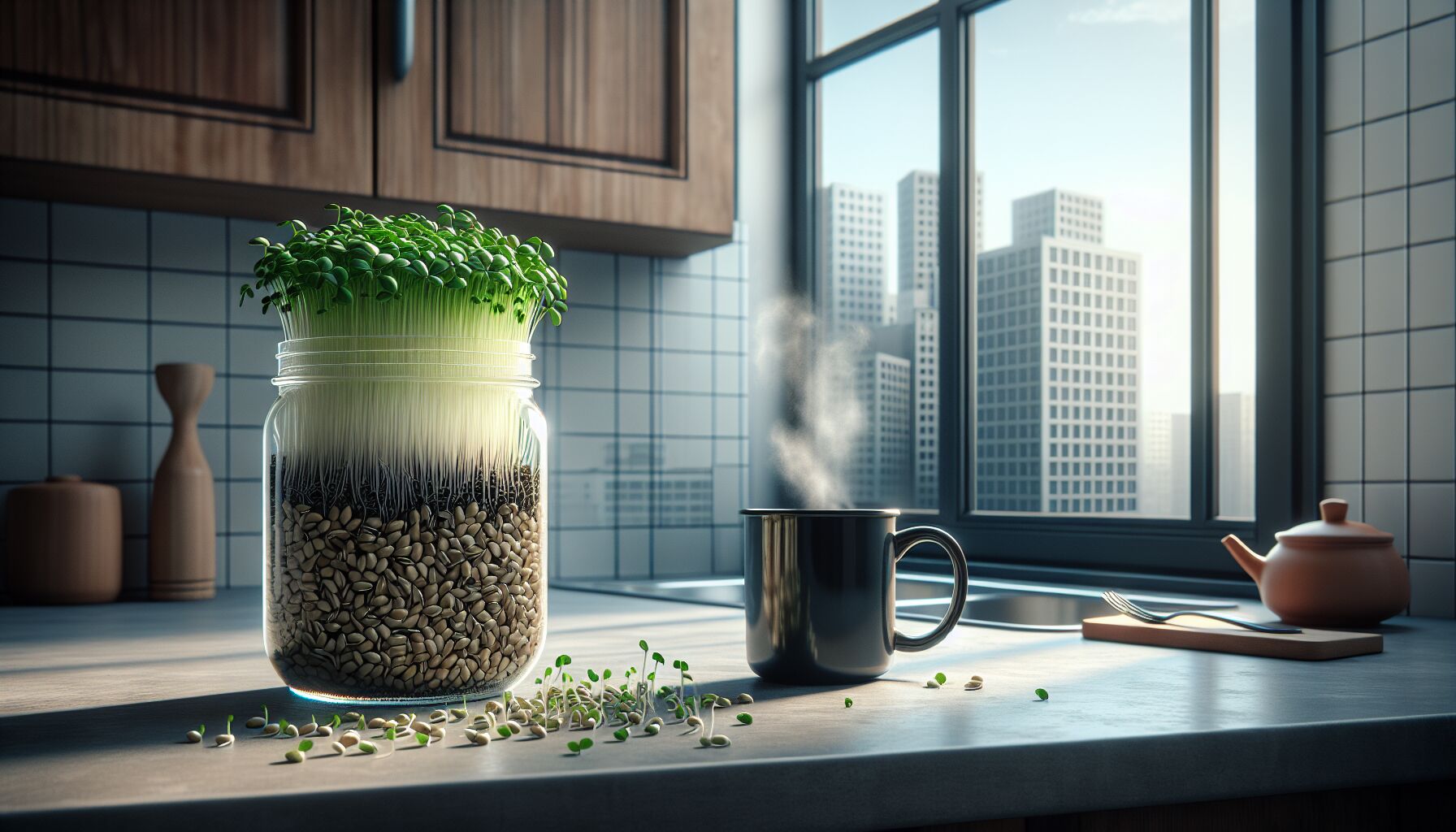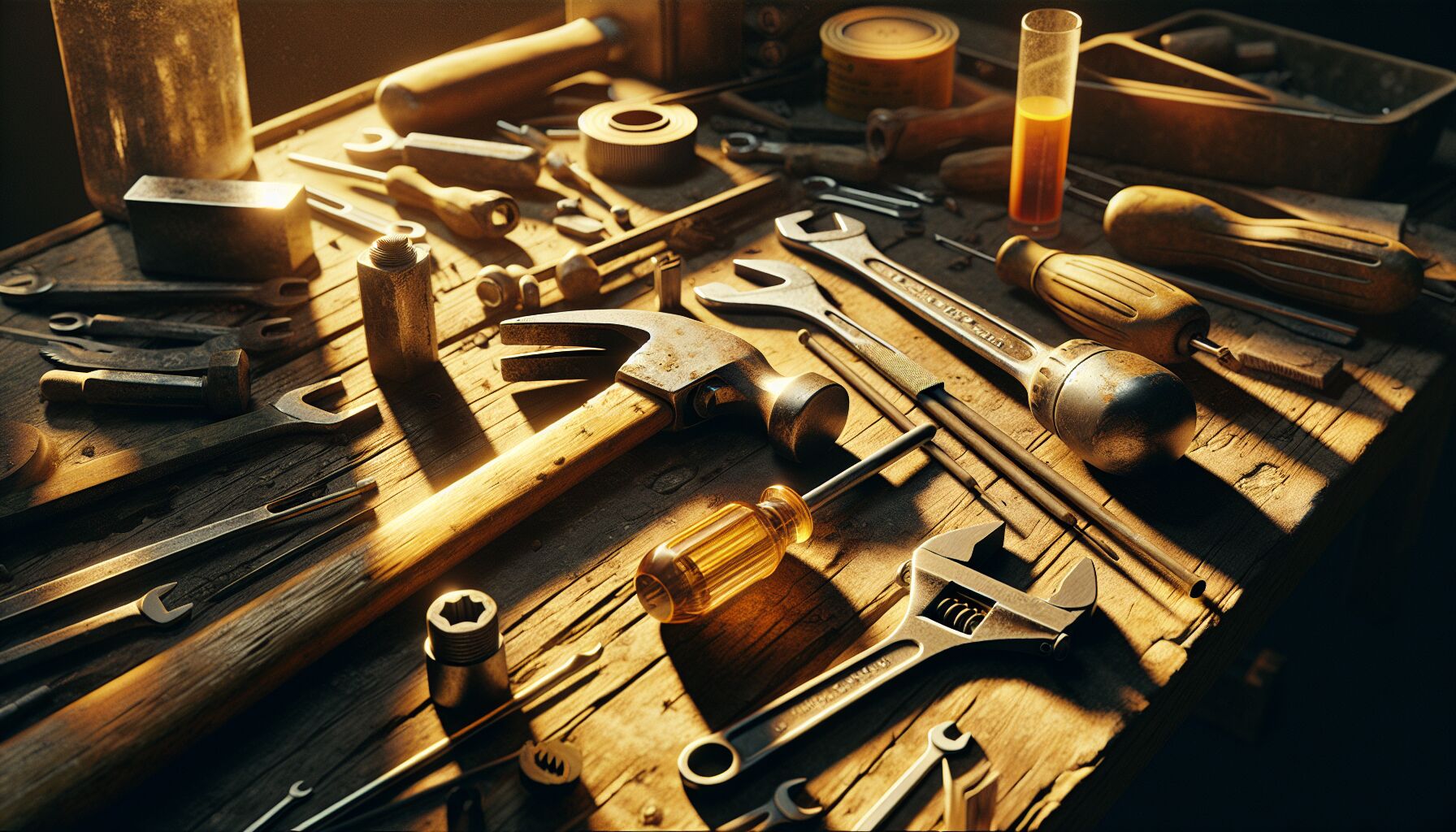 Let’s get one thing straight—growing food isn’t just for people with acres of land and time to burn. Whether you live in a fifth-floor walkup or a converted bus tucked in a city alley, growing something edible is one of the most grounding homesteading skills you can practice. It’s not just about salad greens or saving a few bucks. It’s about stepping back into rhythm with the earth—even if the only dirt you touch is in a recycled yogurt container on your windowsill.
Let’s get one thing straight—growing food isn’t just for people with acres of land and time to burn. Whether you live in a fifth-floor walkup or a converted bus tucked in a city alley, growing something edible is one of the most grounding homesteading skills you can practice. It’s not just about salad greens or saving a few bucks. It’s about stepping back into rhythm with the earth—even if the only dirt you touch is in a recycled yogurt container on your windowsill.
Here’s the thing: city soil isn’t always trustworthy. Raised beds and containers are a cleaner starting point. Grab a couple of food-safe buckets (5-gallon ones work wonders), load them up with good-quality organic potting mix, and give your plants room to breathe. If direct sun is hard to come by, focus on forgiving crops—leafy greens, radishes, and herbs like mint and chives don’t mind a short day. And if your light is borderline? Reflective surfaces can help, and some folks even hang grow lights under their kitchen shelves. It doesn’t take much—a timer, a clip-on lamp, and intention.
Now, vertical space is your best friend when floor space is tight. Think trellises, hanging shoe organizers turned into strawberry patches, or wall-mounted planters made from scrap wood or repurposed gutters. Let your garden climb walls, spill off balconies, or hug window sills. The only real limits are drainage and imagination.
Balconies with strong afternoon sun? Tomatoes, especially those small indeterminate cherry varieties like ‘Sun Gold’, are your goldmine. No balcony? Even a bathroom window that gets 4–6 hours of light can coax a decent harvest from hardy microgreens or mushroom grow kits—just make sure humidity levels are balanced.
One overlooked gem of DIY sustainability is sprouting. Alfalfa, broccoli, mung beans—all they need is a mason jar, a mesh lid, and five minutes a day. They’re nutrient-packed, quick-turnaround crops that don’t require any soil at all. Plus, tending them becomes a kind of meditative check-in. Wash. Rinse. Watch. Repeat.
Aquaponics and hydroponics might sound like you’ve stepped into science class, but small indoor systems like the Kratky method (a no-tech, passive hydroponic system) are perfect for peppers, lettuce, or even basil. It’s a low-fuss, soil-free way to grow heavier-yield plants where critter control is built in—because no aphid wants to swim.
And let’s not ignore the spiritual pull of this practice. There’s something sacred about coaxing life from compost, seed, and sunlight. When we participate in the cycles that support us—even in a modest way—we reclaim stolen intimacy with our food. As Wendell Berry once said:
“People are fed by the food industry which pays no attention to health and are treated by the health industry which pays no attention to food.”
Growing even a fraction of your own food breaks that loop. You’re saying no to chemical-laced strawberries flown 1,500 miles and yes to one juicy tomato on your porch that tastes like sun and effort. You’re reclaiming sovereignty—bite by bite.
And this spills over. A few basil plants on your fire escape don’t just feed you—they teach patience, foster curiosity, and spark conversation. Kids learn where food comes from. Neighbors ask questions. You begin to notice pollinators you’d never paid attention to before. That’s how self-sufficiency bubbles up in tight corners, then quietly spreads.
If the soil speaks—and on your best days, it will—it might whisper humility. Or maybe just remind you to water the spinach. Either way, it’ll say you’re not just a consumer anymore. You’re a steward with dirt on your hands and food growing where few expected it.
So next time you think you’ve got no space for a homestead? Take another look. A cracked bucket. A sunny ledge. Even a sprouter on your fridge. Small starts, steady rhythm. That’s how it begins.
And really, isn’t that how everything real begins?
Composting and waste reduction
Let’s face it—trash has become a by-product of modern convenience. But if you’re walking the homesteading path, even from a high-rise kitchen or a studio flat without a backyard, then waste isn’t something to toss and forget—it’s a resource waiting to be transformed. Composting and waste reduction aren’t just quaint skills our grandmothers passed down. They’re vital acts of self-sufficiency… and subtle rebellion against a system that treats trash like destiny.
Here’s the truth most folks overlook: organic waste is heavy. And when thrown away, it doesn’t disappear—it travels, emits methane, and keeps landfills simmering. According to the EPA, food scraps and yard waste make up about 30% of what we throw out. That’s a staggering amount of potential compost, nutrient-rich soil food, wasted. So, what if we rerouted that stream? Not hypothetically—but right inside the limits of your apartment?
“What we call waste is often just a failure of imagination.” — Douglas Rushkoff
The countertop revolution starts here
You don’t need a backyard or worms crawling out of your cereal boxes to start composting. City dwellers are getting creative with it—think bokashi bins, electric countertop composters (like Lomi or Vitamix’s FoodCycler), and homemade “ferment buckets” tucked under the sink.
Bokashi, in particular, deserves a closer look. Unlike traditional composting, it’s anaerobic—meaning it ferments food scraps (even meat and dairy!) using bran inoculated with beneficial microbes. It doesn’t smell awful, takes up about the same space as a small trash can, and produces a pre-compost that breaks down fast in soil. Pair it with a friend’s yard or a nearby community garden, and you’ve struck gold.
Don’t have garden access? You still have options. Many urban centers now run compost drop-off sites, local cooperatives, or CSA programs that collect food scraps. Smaller cities often underestimate residents’ demand for such solutions—make a few calls, post in a neighbor thread, or bring it up at your local food co-op. Collective care often begins with quiet questions.
The not-so-glamorous magic of worms
If you’ve got the stomach for it—and honestly, it’s not that bad—vermicomposting is pure DIY sustainability genius. A well-set-up worm bin (small, dark, well-ventilated) doesn’t stink and can live in a closet or under your sink without fuss.
Red wigglers (Eisenia fetida) are your MVPs here. They turn veggie scraps, paper, and coffee grounds into rich castings—one of the best soil amendments nature offers. Gardeners call them “black gold” for a reason. Consider it a tiny ecosystem that digests your waste and heals your soil while your life unfolds just inches away. It’s like microhomesteading from the shadows.
Here’s a simple breakdown:
- Build or buy a bin: Plenty of how-to guides exist online, or you can get one pre-made from local suppliers.
- Add bedding: Shredded newspaper, cardboard, or coconut coir all work nicely.
- Feed sparingly: No citrus, no meat, no oils. Your worms aren’t trash compactors—they’re delicate workers with simple tastes.
And like many homesteading skills, this one teaches patience. It’s slow, steady, and a little humbling when you accidentally overfeed and have to reset your bin. That said, the life lessons in decay—and renewal—are worth their weight in compost.
Minimal living, maximal awareness
Waste reduction isn’t only about food scraps. Packaging, single-use plastics, and forgotten clutter all carry energetic weight. Making conscious shifts—like buying in bulk with reusable bags, reusing glass jars (yes, even the ugly ones), or repairing instead of replacing—aren’t radical acts. They’re remembering. Remembering how to live more slowly, more intentionally.
Even small efforts like switching to beeswax wraps instead of plastic wrap or repurposing old t-shirts into cleaning rags reintegrate you with the rhythm of enough. It isn’t about becoming perfect—or going full zero-waste overnight. It’s about thresholds. Starting where you are. Touching your waste stream and asking: how can I be a little more responsible, a little more rooted?
Because the reality is, nothing just “goes away.” Everything loops back—eventually.
The loop isn’t linear… and neither is growth
There’s something deeply spiritual, even alchemical, about tending waste. In composting, you literally take death—the peels, the scraps, the decaying bits of daily life—and turn them toward rebirth. It becomes food for the next cycle. If that’s not a practice in faith, I’m not sure what is.
It also reshapes your relationship with consumption. When you start weighing coffee grounds and banana peels as valuable, you begin to see your choices differently. Fast food? Excess packaging? Unused groceries left to rot? They start to feel heavier, not just in the bin, but in your bones.
You know what rises in their place? Reverence. For your food. For the people growing it. For the quiet, unseen workers—whether microbes or humans—who stitch the broken mess back into soil.
That’s the soft power of DIY sustainability. It invites you to care. Not frantically. Not performatively. Just… consistently.
And that consistency spills over. Into how you brush your teeth. Into how you sort mail. Into how you show up in the spaces you call home.
Real self-sufficiency isn’t loud. It’s nourishing, messy, circular. It moves with the seasons and leans into the imperfect. But it’s these small, faithful choices—banana peels to worm castings, glass jars saved from landfill—that turn ordinary city dwellers into quiet homesteaders.
One coffee filter. One soft footprint. One compost bin at a time.
DIY maintenance and repair skills
 Fixing the Unfixable? Think Again.
Fixing the Unfixable? Think Again.
Here’s a hard truth: many folks have forgotten how things work. Not out of laziness—just disuse. When something breaks, we’re taught to toss it, not troubleshoot. But if you’re honing your homesteading skills in the city, that quick-pitch impulse starts to feel hollow. DIY maintenance isn’t just about saving cash—it’s about building trust. Not in brands or warranties, but in your own hands.
That sticking drawer? That leaking faucet? They aren’t problems—they’re invitations. Each fix is a small rebellion against consumerism’s churn. And here’s the twist: it’s not that hard. With a few tools, some patience, and a willingness to make peace with imperfect work, you become that rare thing—a sovereign dweller in your own space.
Tools of the Trade (Without Going Full Contractor)
You don’t need a garage full of gear. Most urban homesteaders get by with a basic kit:
- A sturdy hammer – preferably with a claw for pulling nails.
- Multi-head screwdriver – Philips, flathead, and a small precision bit for eyeglasses or electronics.
- Adjustable wrench and pliers – for faucets, fixtures, and loosening stubborn bolts.
- Measuring tape and level – because guesswork has limits.
- A cordless drill – not essential, but it opens up *so* many possibilities (and saves your wrists).
Everything beyond that? Gather slowly. You’ll know what you need by what breaks.
Tiny Fixes, Big Shifts
Let’s walk through a few hands-on examples of how common issues become learning moments:
1. The dripping tap – An O-ring replacement or a worn washer is often all it takes. YouTube is flush with resident plumber walk-throughs. Once you do it once, you start seeing water leaks differently—less nuisance, more signal.
2. Loose cupboard hinges – Usually a stripped screw or misaligned bracket. A matchstick in the hole with wood glue can fix a stripped base (yes, seriously). It’s these hacks that feel like wisdom handed down.
3. Broken zippers, small tears, missing buttons – A $10 sewing kit and a spare Sunday morning turn shirts into stitch-learning textbooks. You don’t have to sew your own clothes. But mending one thing? That sends a quiet message to your wardrobe: nothing here is disposable.
Where There’s Smoke, There’s Dust
Maintenance isn’t just mechanical. It’s also about deep tending—and this is where self-sufficiency breaks out of its cliché shell and becomes spiritual practice.
That dusty AC filter you keep forgetting? Cleaning it helps your lungs, lowers your power bill, and reduces strain on the motor. Services like Energy.gov remind us regularly: energy efficiency starts with simple maintenance.
Your fridge coils? Vacuum them every 6 months. Unsexy, but wildly effective. That slow buildup of efficiency boosts adds up—to lower bills, fewer repairs, and a deeper sense that your home breathes with you, not just around you.
“The things you own end up owning you.” — Chuck Palahniuk
But when you maintain them, the balance shifts back.
What Breaks… Teaches
Every stripped screw or jammed garbage disposal is a small parable in resilience. Some will frustrate you. Some you’ll celebrate out loud like you just won an Oscar. That’s part of the practice.
And honestly? There’s peace in it. Knowing that a clogged toilet won’t ruin your day—but invite you to grab the plunger, take a breath, and reset your system. Knowing your light fixture hums because the ballast is going… and realizing, you could swap it yourself (fluorescents be warned, there’s voltage involved—respect it). That’s not knowledge you read once. That’s experience talking.
You learn to respect tools like they’re co-laborers. You start watching repair videos like they’re ancient instruction scrolls. And sure, maybe your solutions look a little wonky—duct tape is a valid bridge between now and later—but they’re yours. Built. Chosen.
The Repair Mindset
There’s something deeply human about fixing what’s broken. Something humbling, sure. But also healing. It’s saying: this isn’t working—and instead of outsourcing the solution, I’m going to sit with it, learn it, and attempt repair.
DIY sustainability lives here—in the messy glue of trial-and-error. It’s not shiny. But it scrapes us back to ourselves.
It also saves money, which, let’s be real, matters. According to the Bureau of Labor Statistics, American households spend nearly $5,000 per year on repairs and maintenance of all kinds. Learning to do even a fraction of that yourself? It stretches your resources and reduces your dependency on systems that may not always show up when you need them most.
Equally important—these small actions ripple. Fixing your kid’s toy instead of replacing it models resourcefulness. Sketchy door latch? Sorted. A wobbly shelf? Tightened. These acts don’t just reinforce wood screws—they build character. Quiet confidence. Creative courage.
Urban Edge, Homestead Heart
Even in a sleek studio or a pre-war walk-up, homesteading skills like maintenance remind you: a real home isn’t made of square footage. It’s crafted, lived in, fussed over. Patch jobs and imperfect fittings become badges of care—not failure.
You begin to listen better. Not just to the soft buzz of a loose light cover, but to what your space actually needs. A bit more heat seal in the winter. A replaced window cord before spring rains come leaking. It’s humble stewardship. It’s honest work.
And funny thing—once you get into the pattern, the repairs almost start speaking to you. That shelf creaks more than it should. That doorknob’s ready to give out. And you? You’re someone who notices. Who lives a little more awake.
No gimmicks. No branding. Just real tools. Real learning. Real care.
Because at the core of self-sufficiency is this simple, sacred agreement: if it matters to you, then you tend to it.
 DS Haven In Light Of Things
DS Haven In Light Of Things





